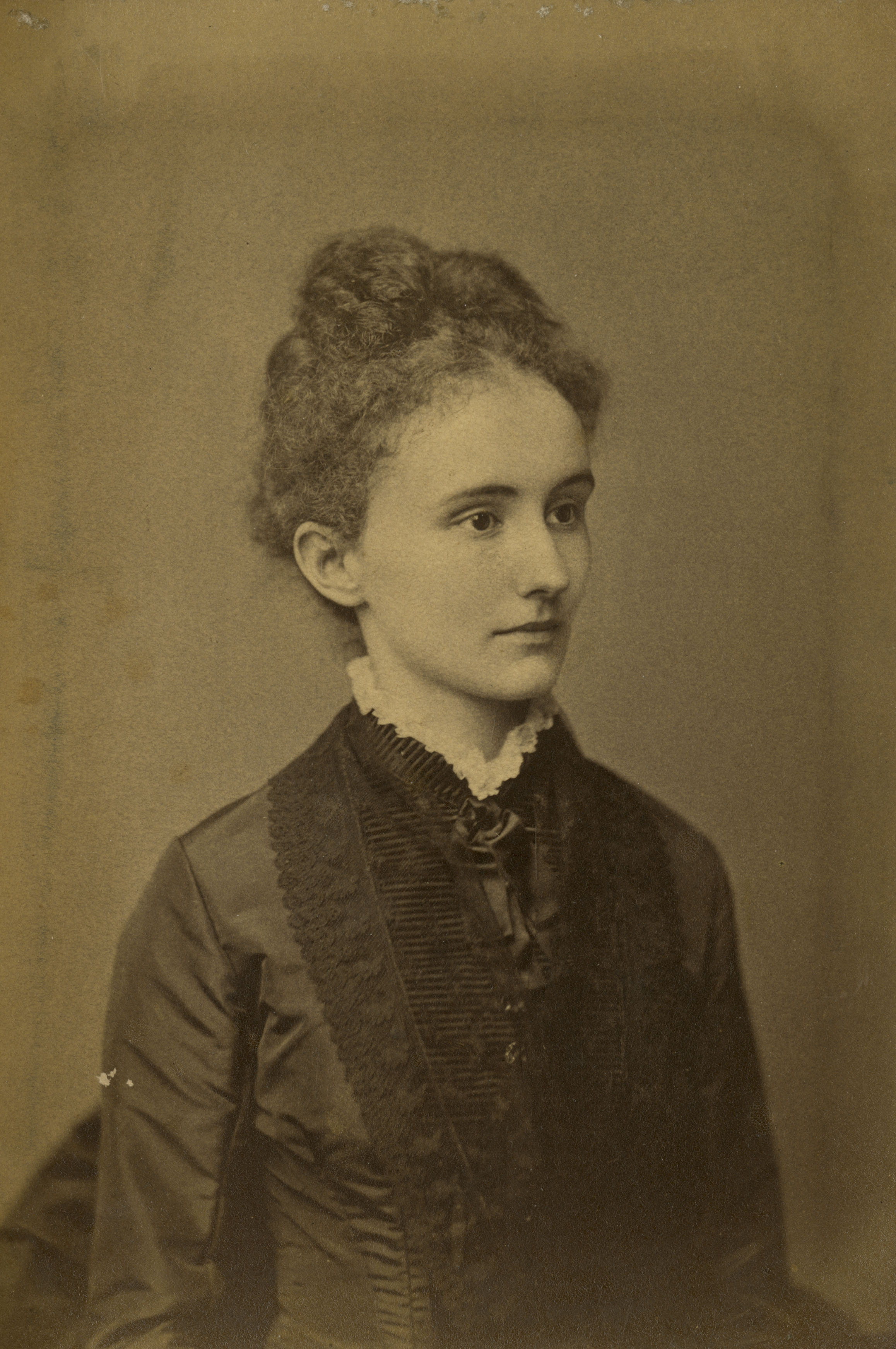

Queer Places:
Green Mount Cemetery, 1501 Greenmount Ave, Baltimore, MD 21202, Stati Uniti
 Mary "Mamie" Mackall Gwinn Hodder (February 2, 1860 – November 11, 1940), professor of English literature, was
born in Baltimore, the daughter of Charles John Morris Gwinn and
Matilda Bowie Johnson Gwinn. M. Carey
Thomas, president of Bryn Mawr College and a redoubtable lady if ever
there was one, chose as her life's loves two women, with some overlap. As a
student in Switzerland in the early 1880s, she formed with her Baltimore
friend Mamie Gwinn what they both considered
a marriage. They lived together, loved each other passionately, and left a
record of kisses exchanged and heads nestled in laps. By the time Thomas
became president of Bryn Mawr in 1894, she was also in love with another
Baltimore friend,
Mary Elizabeth Garrett, who in
addition was her financial patron. Unable to give up Gwinn's “little love” for
the intense and fully requited passion of Garrett, Thomas carefully arranged
the two women's comings and goings so they did not have to meet, although they
of course knew of each other. But what is particularly striking about Thomas's
story is the way she bridged the worlds of romantic friendship and
homosexuality. For she read about lesbianism, including sexual acts between
women, she admired and followed the trial of Oscar Wilde, and she kept lists
of books labeled “Lesbianism” and “Books on Sapphism.” While she shared a bed
with the woman she loved, as had countless romantic friends, she also read
texts that linked love between women and sexuality. Yet Thomas seemingly never
took in any negative portrayals of lesbianism, never expressed any guilt or
unease.
Mary "Mamie" Mackall Gwinn Hodder (February 2, 1860 – November 11, 1940), professor of English literature, was
born in Baltimore, the daughter of Charles John Morris Gwinn and
Matilda Bowie Johnson Gwinn. M. Carey
Thomas, president of Bryn Mawr College and a redoubtable lady if ever
there was one, chose as her life's loves two women, with some overlap. As a
student in Switzerland in the early 1880s, she formed with her Baltimore
friend Mamie Gwinn what they both considered
a marriage. They lived together, loved each other passionately, and left a
record of kisses exchanged and heads nestled in laps. By the time Thomas
became president of Bryn Mawr in 1894, she was also in love with another
Baltimore friend,
Mary Elizabeth Garrett, who in
addition was her financial patron. Unable to give up Gwinn's “little love” for
the intense and fully requited passion of Garrett, Thomas carefully arranged
the two women's comings and goings so they did not have to meet, although they
of course knew of each other. But what is particularly striking about Thomas's
story is the way she bridged the worlds of romantic friendship and
homosexuality. For she read about lesbianism, including sexual acts between
women, she admired and followed the trial of Oscar Wilde, and she kept lists
of books labeled “Lesbianism” and “Books on Sapphism.” While she shared a bed
with the woman she loved, as had countless romantic friends, she also read
texts that linked love between women and sexuality. Yet Thomas seemingly never
took in any negative portrayals of lesbianism, never expressed any guilt or
unease.
Gwinn was an omnivorous reader and gathered around her an intellectually elite group of young Baltimore women, including M. Carey Thomas, later to become the president of Bryn Mawr College, and Mary Elizabeth Garrett, a philanthropist and suffragist. They believed that a woman's mind was a strong as a man's and being a woman should not be a deterrent to receiving and using an excellent education. Gwinn and Thomas became special friends with Gwinn leading the way by suggesting books to read and advising her how to critically interpret them. Thomas admired her as an intellectual with a brilliantly keen mind. In 1879 they went abroad to study at Leipzig and Zurich and traveled extensively throughout Western Europe, returning in 1883. When Thomas was appointed the first dean of Bryn Mawr, Gwinn went with her to study (she received a doctorate there in 1888) and teach. The women lived together at the Deanery, continuing the warm relationship they enjoyed as young women. Their correspondence contains over twenty of their pet names, including Squirrel, Rabbitkins, Mouse, Carina, and Bunnykins. In addition to her lectures, Gwinn did research in Old English and worked on a translation of Beowulf.
When Alfred Hodder arrived in Bryn Mawr, he and Gwinn became involved in what was at first a relationship based on mutual respect for their intellectual gifts but later became a deeply romantic affair. Accepting Hodder's claim that he and Jessie Donaldson were not married, Gwinn in her mid-30's fell passionately in love. In order to keep their liaison secret from M. Carey Thomas, Hodder and Gwinn often exchanged love letters using the initials F. W. (Francis Walton) and V. W. (Valentine Walton). When Thomas finally realized what was happening, there was an irreconcilable rift in her friendship with Gwinn. After their marriage in 1904, Hodder and Gwinn lived in New York City where Hodder was already working for district attorney Williams Travers Jerome. The romance of the "Fairy Prince and Princess" ended in 1907 when Hodder died. Gwinn and Hodder's mother, Mahalia Riley Hodder, believed in spiritualism and found comfort in "contacting" him from the grave. Gwinn never returned to an academic life but lived in Baltimore and later in Princeton, N.J. Although an ardent believer in higher education for women, she was not a suffragist.
Bryn Mawr School for Girls in Baltimore
Green Mount Cemetery, Baltimore, MD
Gwinn died in 1940.
My published books: